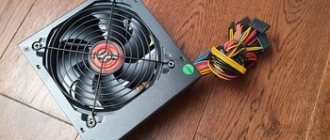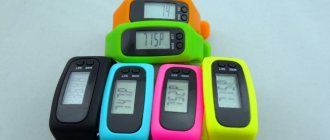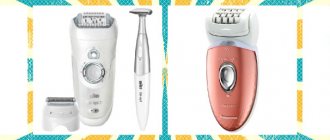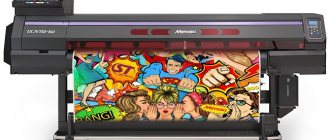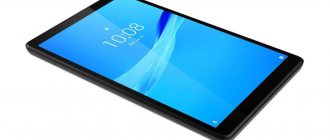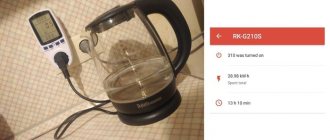The world has long been accustomed to portable batteries. The operation of the device from batteries made it autonomous, but gave rise to the problem of periodic replacement. The next step was battery-powered, rechargeable devices. The familiar form factor of batteries makes them highly versatile. It is precisely because of the universal demand and ubiquity of rechargeable batteries that any person will sooner or later be faced with the need to choose the best rechargeable batteries.
What types of rechargeable batteries are there?
All manufactured batteries are characterized by several standard parameters that determine the scope of application.
Some of them are modeled after disposable batteries and are designed to replace them. On the other hand, not all batteries can find an equivalent among batteries. For example, most “tablets” like LR44 and the like remained only batteries, since recharging an element of this shape is inconvenient, and a disposable one is already quite cheap.
Among the characteristics by which Rechargeable devices are selected, three main ones can be distinguished:
- Manufacturing technology.
- Form factor.
- Capacity.
Most well-known manufacturers produce different types of products, from which you can choose the set of parameters that suits the consumer.
Why should you believe this article?
This material is a brief extract from several studies by Alexey Nadezhin (see the grandiose testing of batteries and accumulators) and his own reviews of chargers. Alexey’s research is so extensive that we do not know of any other similar source either in Russia or abroad. Plus, we took into account all the latest updates on batteries so that the article always remains relevant. Plus, we structured the results of our own large study on chargers. So yes, this article can be trusted. And yes, you can use it to choose good batteries.
Technology
Many parameters depend on what physical processes underlie the generation of electric current: sensitivity to environmental conditions, charging speed, the presence of a “memory effect” and others.
The memory effect is a feature that causes batteries to “remember” their operating mode if they are not completely discharged before the next charge. This leads to a drop in capacity, since in subsequent cycles the battery will deliver current only up to the limit fixed by the chemical elements. To avoid memory effect, you need to completely discharge the battery before restoring it.
Nickel-cadmium
These rechargeable batteries were one of the first to appear and for a long time there was no alternative to them. Despite the emergence of other, more advanced systems, they retain their position in devices that require reliable uninterrupted power supply under high load.
The reason for this is a number of advantages:
- Ability to work under high load.
- Charge with high current in a short time is allowed.
- Heat resistance - the batteries themselves hardly heat up when charging due to their low resistance.
- Possibility of storage in a discharged state.
- Immunity to low temperatures.
Among the shortcomings are:
- Harmful impact on the environment.
- Dear safe disposal.
- Memory effect.
- Impressive self-discharge when idle.
- Inability to use in buffer mode.
The displacement of nickel-cadmium batteries is observed in developed countries, where environmental standards are being tightened.
Expert opinion
Torsunov Pavel Maksimovich
In household use, nickel-cadmium batteries are most often used in photo and video equipment, as well as in radio-controlled models.
Nickel metal hydride
They arose as an attempt to get rid of two main negative parameters of nickel-cadmium batteries - the memory effect and the harmful impact on the environment. It was possible to achieve complete environmental safety of these batteries. They are practically not subject to the memory effect - they can be recharged in any state. A big plus is also the increase in capacity with similar parameters - by about 20%. However, there are some drawbacks: due to the peculiarities of the technology, the service life of nickel-metal hydride batteries is lower than that of competitive options, and their self-discharge is greater than that of competitors.
In 2005, the Eneloop series batteries were presented - the first Ni-Mh LSDs. They combine the advantages of cadmium and old hydride batteries. When left in storage for long periods of time, these innovative batteries lose a significantly smaller percentage of their capacity. And they are less demanding on temperature conditions.
If you need to store Ni-Mh batteries, they need to be fully charged and placed in the refrigerator, preferably in a sealed zip bag against moisture.
Lithium-ion
This type of battery is extremely common in mobile phones, players, smart watches and other gadgets. However, the manufacturer often produces them in the form of AA batteries.
Reasons for the popularity of lithium-ion technology:
- Extremely low self-discharge current (an idle device retains its charge for months).
- Large capacity in small size.
- Ability to work with different currents.
- The output voltage does not drop, but is maintained until complete discharge.
The main disadvantage of lithium-ion batteries is their sensitivity to changes in current, as well as to complete discharge. Therefore, this type works best in conjunction with electronic controllers and blockers that equalize the input voltage and also automatically turn off the battery when certain values are reached.
Expert opinion
Torsunov Pavel Maksimovich
Lithium-ion batteries are “afraid” of the cold, actively losing charge. They can also catch fire, so be careful when handling them.
Advantages and disadvantages of different types of batteries
| Type | Advantages | Flaws |
| Salt | Very low cost. | Capacity drops significantly at low temperatures; Fast self-discharge; Severe voltage drop during discharge. |
| Alkaline (alkaline) | Increased capacity; Stored for up to 5 years; Good tightness; Low self-discharge rate; Can work at low temperatures. | Heavy weight; Quite a high price; Voltage reduction during discharge. |
| Lithium: | Very high capacity; Not afraid of high load current; Very long shelf life; Can work at high and low temperatures; Light weight. | Very high cost. |
Here we will not talk about the shape of different batteries, since below we will only talk about the so-called “finger” and “little finger” products. We will also tell you about the best rechargeable batteries that are ideal for use, for example, in computer peripherals.
Form factor
It is the form factor that the batteries inherited from their predecessor batteries.
Typing the sizes and shapes of batteries allows you to conveniently replace them, achieving optimal operating time.
At the moment, the most common standard sizes are considered to be:
- AA . They are finger-shaped. The production volume of these rechargeable batteries probably exceeds all other batteries combined. Their nominal voltage is 1.2 V, although when freshly charged they can output up to 1.4. The capacity varies widely - from 200 mA to 3000 mA and even more.
- AAA . Another name is pinky. They differ from the previous version only in smaller sizes. Their use is justified where standard AA simply will not fit or will be too heavy. True, their capacity is smaller - usually up to 1500 mA.
- C and D. They are similar to ordinary finger ones, but only larger. Accordingly, their capacity is greater. The large size and weight dictate its specific application, where the compact size is not particularly important, for example, music and sound equipment, as well as various automatic systems.
- PP3 . In Russia, it is traditionally called “Krona”. Unlike a battery, the rechargeable device produces a current of 8.4 V. Many electrical appliances, some remote controls and radio-controlled devices operate on the “Krona”.
There are other sizes of rechargeable batteries, but they are less common.
In order to obtain a battery with greater power, AA or AAA battery packs are used, connected in series. In this case, the battery capacity remains equal to the capacity of one element in the circuit, and the output voltage remains equal to the sum of the unit values. For example, a common battery format for toys and radio-controlled models is 4.8 V, that is, 4 “banks” of 1.2 V each.
What currents are best to charge batteries?
This topic is shrouded in many myths. It is believed that for the sake of a long battery life, it should be charged only with a current of 0.1 of its capacity. Supposedly this allows you to extend the life of the battery as long as possible. The problem is that, in addition to the obviously long time required for a full charge, these requirements impose significant restrictions on the chargers used. So, for AAA batteries with a capacity of 900 mAh, the current strength of 0.1 of the capacity should be 90 mA. Well, with a capacity of 600 - 60 mA. Agree, finding such chargers is quite difficult. For example, the Littokala Lii-500 we recommend starts charging with currents of 300 mA, which seems to make it unsuitable for properly charging AAA batteries.
We decided to spend the pain
Capacity
Are you already using rechargeable batteries?
I've been wanting to try it for a long time
The capacity parameter is equivalent to the time during which the device can be fully powered by the current emitted by the battery. In other words, the larger the capacity, the longer the device can operate on a single charge.
This parameter is measured in milliamp-hours. The range of commercially available values can range from 100 to 12000 mAh. It would seem that choosing the most capacious battery would be the best solution. But in practice everything is not so simple. The larger the battery capacity, the longer it takes to charge. And it’s good if charging with high voltage current is available. But if we are talking about metal hydride elements, which are recommended to be powered with a weak current, the convenience of devices with a large capacity no longer seems so obvious. Consider the energy consumption of the device and its operating mode.
Signs of the best AA batteries
To choose the best among all types of AA batteries, it is not enough to focus on the indicated capacity value. Many batteries have exorbitant capacitance characteristics, which can differ from actual parameters by tens of times. Therefore, the fantastically large capacity indicated on the battery is a clear sign of a low-quality product.
Signs of high quality battery cells are:
- low self-discharge - up to 10% per year - this feature is indicated by the designation LSD (Low Self Discharge);
- the ability to quickly recharge with high currents, good tolerance of powerful loads and high discharge currents - also characteristic of LSD-type models;
- indication of plausible capacity values - for AA cells it averages 2000–2500 mAh, and for AAA batteries – 750–950 mAh;
- well-known brand - DURACELL, Panasonic, VARTA, GP, Energizer, ROBITON.
Best options
The concept of the best battery is abstract: what is good for toys may not be suitable for serious equipment. Therefore, the batteries included in the review simply stand out due to some outstanding characteristics, price or favor of users.
Robiton Ni-MH PR44 40mAh (40BVH)
This battery is the smallest and cheapest rechargeable battery on sale. Only 40 mAh, but the size is no larger than a pinhead. The area of application is very specific - hearing aids. People with hearing impairments rarely need to recharge, because the energy consumption of these devices is minimal.
| pros | Minuses |
| Mini size | Relatively fast degradation |
| safety of use | |
| Low price |
Perfeo AA 2700 mAh Ni-MH
These rechargeable batteries are among the cheapest in the AA size. Four full-fledged elements, and even with a plastic case, for less than 500 rubles. The capacity of each element is 2700 mAh, which allows them to be used in various devices characterized by high energy consumption.
| pros | Minuses |
| Large capacity | Unstable operation during operation |
| Low price | |
| Case included |
Camelion R20, 1.2 V, 4500 mAh, NiCd BL2
Chinese-made Camelion batteries are popular not only in Russia, but also in the markets of Europe, Indonesia, and Latin America. They occupy a position in the middle - between brands such as Duracell or Panasonic, and very cheap “no-name”. Size D and decent capacity allow these batteries to be used in powerful equipment, and nickel-cadmium technology is adapted for high charging current
| pros | Minuses |
| High capacity | Specificity of using the standard size |
| Nickel-cadmium filling | |
| Low price |
GP Rechargeable 1000 Series AAA Ni-Mh 950 mAh
GP batteries and accumulators have become the best-selling brand in Russia, ahead of more expensive ones. The reason is a reasonable price, a well-thought-out marketing policy, and most importantly, the correct building of B2B relationships. Providing favorable conditions for retail chains, GP is actively introducing its devices to store shelves. The quality of the batteries shown in the review is quite tolerable, and a capacity of 1000 mAh is the golden mean for most devices.
| pros | Minuses |
| Well represented in many retail outlets, sometimes even non-specialized ones | It happens that the precharge value jumps |
| Optimal capacity | |
| Reasonable price |
Energizer Accu Recharge Power Plus 9V Crown Ni-Mh 175 mAh
Size PP3 from the famous American company Energizer. Manufactured, naturally, in China. The quality is excellent, and the low capacity compared to finger-type ones is due to the current output of 9 volts. A good option for replacing a regular battery in relevant devices, despite the price.
| pros | Minuses |
| Standard size "Crown" | Small capacity |
| Good workmanship | High price |
| Long service life |
ROBITON 18650-3400 Protected, 3.7 V Li-Ion 3400 mAh
In addition to available solutions in nickel-metal hydride, the Robiton company produces inexpensive lithium-ion batteries in the classic AA format - in this case, labeled 18650. The battery is characterized by a large capacity, and most importantly, is equipped with an electronic unit that protects against overcharging and failure.
| pros | Minuses |
| Lithium-ion technology | High price |
| No memory effect | |
| Electronic protection |
DURACELL Rechargeable HR03-4BL, 850mAh, AAA
The company is rightfully considered a leader among manufacturers of both batteries and accumulators. The emphasis is on the most popular formats AA and AAA. For example, a set of four little finger batteries with a capacity of 850 mAh each will have to cost more than a thousand rubles. What can you do, you have to pay for quality.
| pros | Minuses |
| Good workmanship | High price |
| Long service life | |
| Large number of valid cycles |
Panasonic eneloop AAA Ni-Mh 750 mAh
An example of the evolution of a standard nickel-metal hydride battery. The manufacturer proudly claims 2100 recharge cycles. It is unlikely that ordinary users can check this indicator. But even excluding marketing, we can note the almost complete absence of self-discharge and the possibility of long-term storage of the Eneloop series.
| pros | Minuses |
| Long service life | High price |
| Large number of charging cycles | |
| Minimum self-discharge during inactivity |
The best alkaline (alkaline) batteries
Duracell Turbo Max
Rating: 4.9
Duracell batteries are traditionally sold in packs of 2, 4, 8 and 12 pieces. What distinguishes them from other batteries of this kind is the presence of a charge indicator. The user only needs to place his fingers on special points, and a special strip will show whether the battery is capable of delivering energy. The product also has a long shelf life, which not every alkaline battery can boast of.
The manufacturer assures that his creation can work much longer than any other batteries - there is a mention of 70% on the packaging. In fact, this battery does last longer than a regular Duracell AA, but only by 7-14%. Independent tests have shown that when used in a compact camera, the charge runs out after 253 shots, which cannot be called an ideal result - some cheaper analogues are capable of the same “feats”. Also, not everything is in order with the safety of the product - if you create a short circuit, then after half an hour the housing will begin to leak.
Perhaps, this product was included in our rating due to its widespread use. You can find Duracell Turbo Max batteries at any retail chain that sells consumer electronics. Moreover, they can often be purchased even in regular supermarkets.
Advantages
- There is a charge indicator;
- There are different packaging options (from 2 to 12 batteries);
- The operating time cannot be called low;
- Widespread;
Flaws
- This series of batteries has been discontinued;
- Fairly high cost;
- Low level of short circuit protection;
Sony Alkaline STAMINA Platinum
Rating: 4.8
Another alkaline battery with AA and AAA form factors. They can be supplied in different packages, but the most popular is the option with four batteries. The manufacturer writes that the product works 50% longer than analogs from competitors. In fact, the increase is not so great, unless you compare these batteries with batteries that cost four times less. But there’s no arguing about the long shelf life - most likely, Sony batteries will actually work even ten years after they were manufactured.
Tests have shown that the batteries are best suited for use in remote controls and other devices that are used only occasionally. If the device requires constant power (for example, a toy railroad or radio), then the charge can run out very quickly.
Unfortunately, these batteries are supplied to Russia in limited quantities. It is extremely rare to find them in retail chains. Nevertheless, the batteries have earned their place in our ranking.
Advantages
- Long shelf life;
- Good protection against leaks;
- Decent capacity;
Flaws
- High price;
- In Russia, batteries from Sony are almost not common.
Duracell Turbo AA/HR6
Type : Ni-Mh
Price : 699 rub.
Duracell Turbo AA/HR6 batteries come pre-charged so they can be used straight out of the box. Unused charge is stored for 12 months. Thanks to the long-lasting ionic core, you will provide yourself with an excellent charge of energy, which is saturated with each battery.
Powerful batteries are compatible with all chargers of the same type. Thanks to their long-lasting charge and the infrequent need to recharge, Duracell Turbo AA/HR6 batteries stand out among their peers.
Interesting fact: the anthropomorphic symbol of Duracell batteries is a pink rabbit. Since 1973, the Easter Bunny has symbolized tirelessness and high productivity at work. This image for advertising was invented by designers and marketers in collaboration to charge the consumer with positive emotions that influence the human subconscious.
Test No. 2. Pulse discharge. AAA batteries.
But the results of the pulse discharge test are generally similar to the results of tests of AA batteries, but with one big “BUT”: KODAK batteries again found themselves in last place, and with a significant lag behind their closest pursuer - ENERGIZER.
The leaders in the test were DURACELL batteries, which were the only ones that lasted more than an hour. GP came in second place with 0.93 hours. The top three are closed by the leaders of the continuous discharge test - TROPHY, which showed 0.88 hours. Notice the fairly obvious gap between the top three and the rest of the brands.
Absolute operating time of AAA batteries under pulsed load
PROconnect 18650
Type : Li-ion
Price : 210 rub.
The battery is designed for use in flashlights and other high power consumption devices. The PROconnect 18650 has no memory effect, which is a plus as it will not reduce the efficiency of the power supply.
According to customer reviews, PROconnect 18650 is a good alternative to cadmium batteries. The battery holds a charge for a long time and lasts a long time during operation. One of the buyers immediately tested the battery after purchase, and this is what he said: “For this price, the battery is just a godsend. It works and is already good! And if you need something else, it’s in a different price category.”
Comparison table of characteristics
By visually comparing the models presented in the table below, you can definitely find out which rechargeable batteries are better.
| Model | A country | Capacity (mAh) | Voltage (V) | Form factor | Price, rub) |
| GP Rechargeable 2700 Series | China | 2700 | 1.2 | AA | from 467 to 801 |
| Panasonic eneloop | Japan | 2500 | 1.2 | AA | from 438 to 788 |
| Duracell Turbo AA/HR6 2500 | Japan | 2500 | 1.2 | AA | from 284 to 504 |
| VARTA Recharge Accu 2700 AA | Germany | 2700 | 1.2 | AA | from 89 to 125 |
| ROBITON AA R6 Mignon 2850 | China | 2850 | 1.2 | AA | from 643 to 820 |
| Rombica NEO X2 AA | China | 1500 | 1.5 | AA | from 872 to 992 |
| Ergolux Rechargeable batteries AA | China | 2700 | 1.2 | AA | from 202 to 454 |
| Energizer Accu Recharge Extreme AA | Japan | 2300 | 1.2 | AA | from 238 to 422 |
| ROBITON AA HR6 Mignon 2500 | China | 2500 | 1.2 | AA | from 312 to 456 |
| Camelion Always Ready AA | China | 2500 | 1.2 | AA | from 309 to 442 |
Test No. 1. Continuous discharge. AAA batteries.
For AAA batteries, the operating time during continuous discharge is usually more relevant than for their larger brothers. Judge for yourself, the best AAA battery lasted 3.5 times less than the AA-sized finger-type champion.
The leaders in this test were TROFI brand batteries, which lasted 0.26 hours, leaving behind more famous brands. Looking at the chart, you can see that a group of leaders has formed, which, in addition to TROPHY, also includes DURACELL with a result of 0.23 hours and GP with a result of 0.20 hours. Next come two brands whose results are significantly worse than those of the leaders: ENERGIZER and, surprise, KODAK. The latter, let me remind you, were the best in the continuous discharge of AA batteries.
Absolute operating time of AAA batteries under continuous load
Test No. 2. Pulse discharge. AA batteries.
In the pulsed version of the discharge, the places were distributed completely differently. Taking revenge for the defeat in the first test, DURACELL takes the lead, having worked for 4.72 hours. A slightly shorter time - 4.43 hours, was shown by KODAK batteries. GP performed 0.5 hours worse, taking third place. This is where the separation group ends; the remaining batteries showed noticeably worse results. TROPHY worked for 3.66 hours, and ENERGIZER for 3.58.
Absolute operating time of AA batteries under pulsed load
These are the dry and unyielding results of the measurement tests. From the point of view of absolute operating time, KODAK batteries look the most advantageous - they lasted the longest with continuous discharge and showed more than decent results with pulsed discharge.
On the other hand, if you clearly know that you will use batteries in high-tech devices with periodic peak loads, then the best option would be DURACELL batteries, which lasted 0.3 hours longer in the test than the nearest competitor.
Test No. 1. Continuous discharge. AA batteries.
Let's see how the batteries performed in the first test. The Kodak fingers worked the longest with a result of 0.9 hours. Second place is shared by GP and TROFI - with a result of 0.8 hours. The popular brand Duracell was in second to last place with a result of 0.72 hours. This is 23 percent less than the test leader's time. The worst results were shown by Energizer brand batteries, operating for only 0.64 hours. Interesting fact: the difference between the ratings of different brands in this test is almost always 0.1.
Absolute operating time of AA batteries under continuous load



